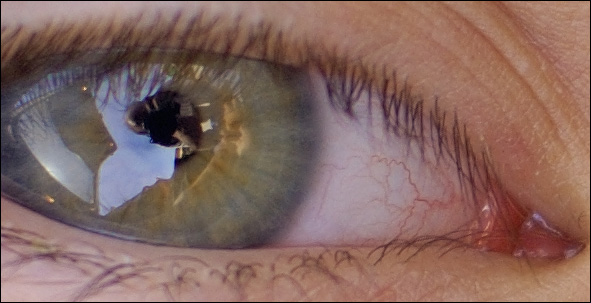
|

|

|


|

|

|
Overview Focus Accuracy
Related: digital sensor, field curvature, focus, focusing, precision and accuracy

This page summarizes some issues with focus accuracy. It was an early effort, and far more material is now available in DAP.
Terminology
Plane of focus, zone of focus— The plane (2-dimensional geometric surface) upon which the lens is focused, assuming a lens has a perfectly flat field (no curvature of field). In the real world, the term zone of focus is much more appropriate and accurate as it rarely is a plane.
Curvature of field — The degree to which a lens focuses in a shape other than a plane (a 2-dimensional geometric surface). Virtually all lenses have curvature of field. Even macro lenses, though usually well-corrected for planar subject matter, can exhibit trace amounts of curvature of field obvservable with suitably high resolution images.
A lens with curvature of field does not focus on a a plane but rather has uneven focus from center to corners. Subject matter in front of or behind the desired plane of focus might be rendered sharply in such a lens even as subject matter on the plane of focus (but elsewhere in the frame) might be rendered sharply. The Nikon NOCT-Nikkor 58mm/f1.2 is an example of a lens with strong curvature of field.
Back-focus — Focusing of the lens behind the plane of desired focus (more distant).
Critical-focus — Focusing of the lens with sufficient accuracy such that there is no detectable difference in image sharpness and/or contrast for the particular recording medium used. Greater accuracy is required for a higher resolution camera than for a lower resolution camera (assuming equal sensor sizes).
Front-focus — Focusing of the lens in front of the desired plane of focus (closer).
Today’s high resolution digital cameras, even “prosumer” models with “only” 6 megapixels have resolution high enough to reveal even very small focus inaccuracies.
But focus accuracy becomes critical with cameras like the Nikon D2X and Canon EOS 1Ds Mark II when used with “fast” lenses at large apertures like f1.2, f1.4, f2, f2.8. The D2X, with its 5.5 micron pixels, and the Canon EOS 1Ds Mark II, with its 7.2 micron pixels, quickly become 2-megapixel cameras at f1.2/f1.4 if focus is not extremely spot-on. [See The Sharpest Image]. Plug in 5.5 microns to a depth of field table, and the number might as well be zero for an f1.4 lens.
It’s not focusing where you think it is!
It’s not common for consumer-level cameras to show the indicated focus points slightly off from where the camera actually focuses! In other words, that focusing point might be to the left/right or top/bottom of where the AF system is actually looking.
You can test for this error by focusing at the edge of a building, edge of a chart, etc; place the focus sensor (as seen in the viewfinder) at the very edge and watch where the camera focuses (use single shot focus mode). Repeat this for different sensors and for left versus right. Shoot in portrait and landscap mode as well.
Conclusions
For details, please see the conclusions in each individual articles.
Any test which evaluates sharpness must determine whether the intended plane of focus has been achieved. This can be achieved by shooting multiple frames and/or fine-grained focus bracketing. Failure to do so invalidates the results of any such test. Before you conclude that a particular lens is “soft” or a “dog”, check whether you have focused it accurately!
Real-world subjects often do not require such high precision, because the lens is stopped down and/or the subject is suitable for focus within a range of areas. However, certain subjects, such as close-ups and/or images using wide apertures such as f1.2/f1.4/f2 (or even f5.6 on a 300mm) also require precision focus. Mis-focusing on such subjects can have a huge impact on resolution in the resulting image.
The Nikon D200 and D2X (or likely any Nikon digital body) cannot be relied upon to achieve critical focus with either autofocus or manual focus. Whether this is true for Canon EOS will be the subject of a future addition to this page.


















